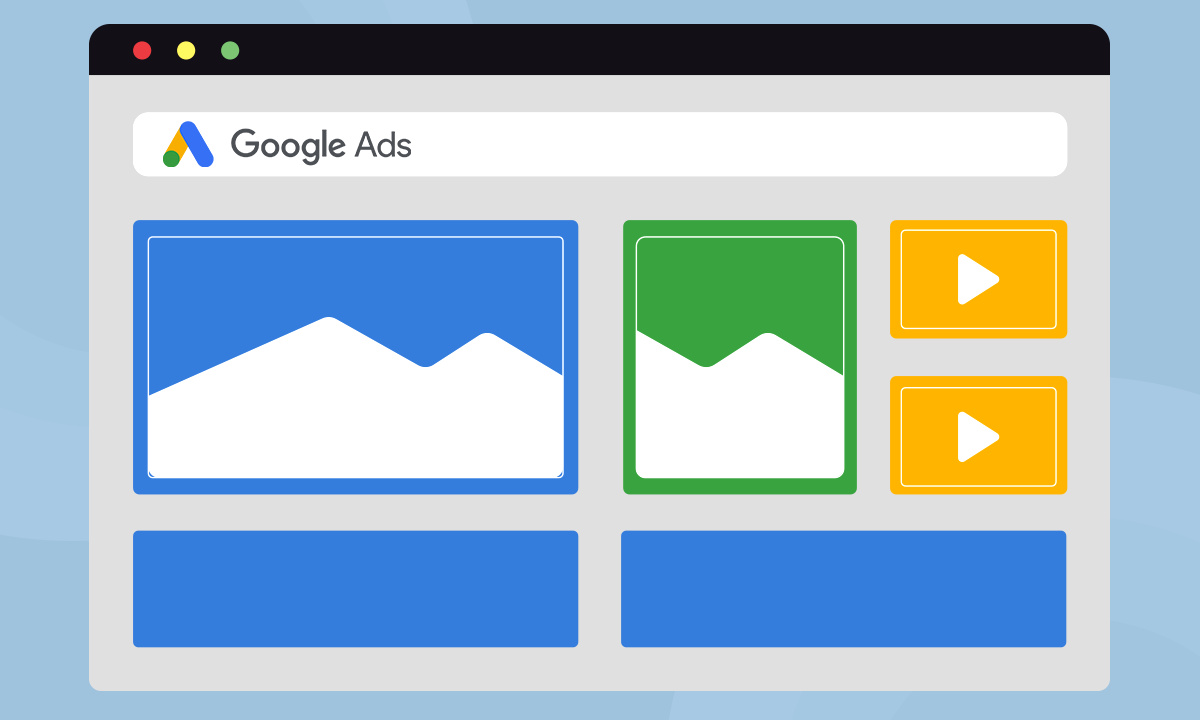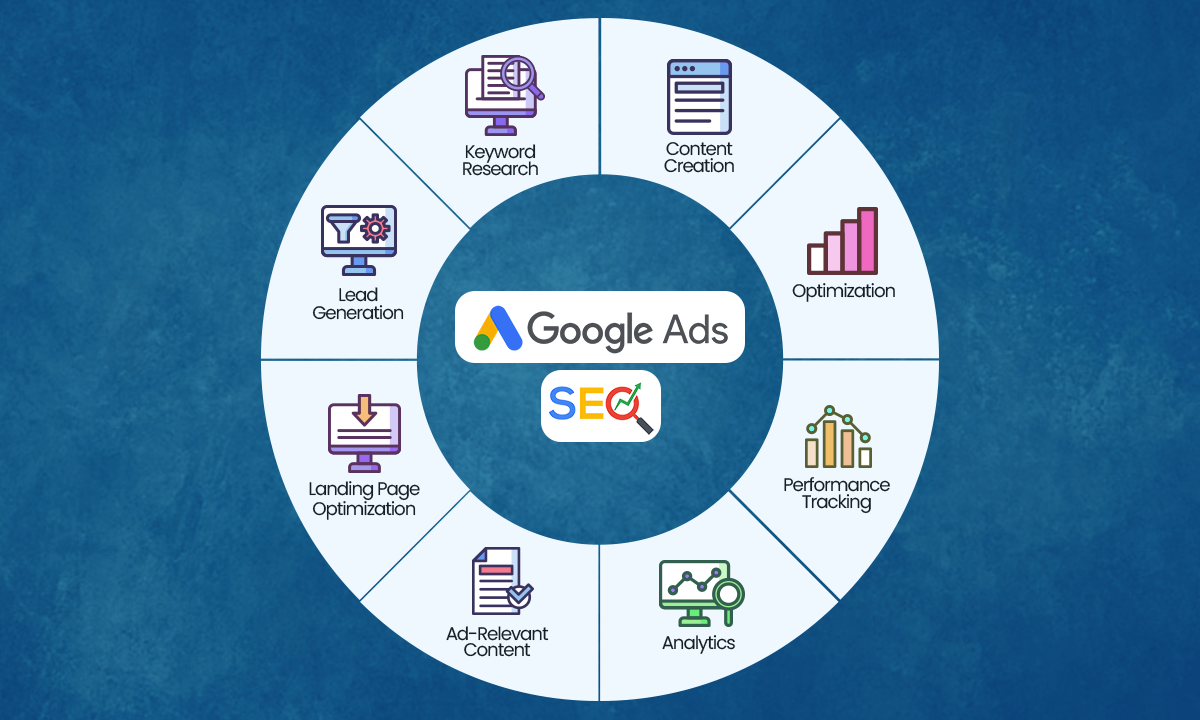Google AdWords and SEO:
How They Work Together to Boost Your Digital Marketing Strategy
Introduction
In the realm of digital marketing, two tools stand out for their ability to significantly enhance your online presence: Google AdWords and Search Engine Optimization (SEO). While each has unique strengths, combining them can maximize your visibility and drive more traffic to your website. Understanding how these tools work, their differences, and how they complement each other is crucial for any business looking to thrive online. This blog will delve into the specifics of Google AdWords and SEO, highlight their differences, explore how they complement each other, and provide actionable insights on how to use them together effectively.
What is Google AdWords?

Google AdWords, now known as Google Ads, is a pay-per-click (PPC) advertising platform that allows businesses to bid on keywords to have their ads appear at the top of search engine results pages (SERPs). Here’s how it works:
Search Ads:
These are text-based ads that appear on Google’s search results pages.
For instance, if you run an online shoe store, you might bid on keywords like "buy running shoes" or "best running shoes for women." When someone searches for these terms, your ad could appear at the top of the search results.
An example of this would be a search for "best running shoes" resulting in an ad from Nike at the top of the page. For more details on search ads, visit Wordstream’s guide.
Display Ads:
These are visual ads that appear on websites within the Google Display Network.
They can be in the form of banners, images, or videos. For example, a display ad for a new smartphone might appear on a technology news website.
This form of advertising is great for raising brand awareness and retargeting users who have previously visited your site. Learn more about display ads from Google itself.
Video Ads:
These ads are shown on YouTube and other video partner sites.
For instance, a 15-second pre-roll ad for a fitness app might play before a workout video.
Video ads are particularly effective for engaging audiences with compelling visual content. Check out YouTube's video ad formats.
What is SEO?

Search Engine Optimization (SEO) involves optimizing your website to rank higher in organic search results. Unlike Google Ads, which can deliver immediate traffic, SEO is a long-term strategy that builds sustainable traffic over time. SEO encompasses several key components:
Keyword Research:
This is the process of identifying the terms and phrases your target audience uses when searching for products or services similar to yours.
For example, if you own a coffee shop, relevant keywords might include "best coffee in [your city]" or "organic coffee beans."
Effective keyword research helps you understand the search intent and behavior of your potential customers. A useful resource for keyword research is Moz's Keyword Research guide.
On-Page Optimization:
This involves enhancing the content and HTML source code of a page to make it more search-engine-friendly.
For example, optimizing a blog post about healthy eating might involve including keywords like "healthy recipes" and "nutritious meals" in the title, headings, and throughout the content.
Other elements of on-page optimization include meta tags, alt text for images, and URL structure. For more on this, see Ahrefs' On-Page SEO guide.
Technical SEO:
This focuses on improving the technical aspects of a website to increase its crawlability and indexability by search engines.
This includes ensuring your site loads quickly, is mobile-friendly, and has a clean and efficient code.
For instance, compressing images and enabling browser caching can significantly improve site speed, which is a crucial ranking factor for Google. For a deeper dive, visit SEMrush's Technical SEO guide.
SEO is a comprehensive approach that requires ongoing effort but can deliver long-lasting benefits. For example, a well-optimized blog post might continue to attract organic traffic for years, whereas a paid ad stops driving traffic once the budget is exhausted.
Key Differences Between Google AdWords and SEO:

1. Cost Structure:
AdWords: You pay for each click on your ads. For example, if your ad gets 100 clicks at $1 per click, you pay $100. This cost can vary based on the competitiveness of the keyword. To understand more about PPC costs, visit WordStream's PPC Costs guide.
SEO: Requires investment in time and resources but no direct cost per click. For instance, while you might pay for tools or services to help with SEO, there’s no charge each time someone clicks on your organic listing. For more about SEO costs, check out Ahrefs' SEO Pricing guide.
2. Speed of Results:
AdWords: Provides instant visibility and immediate traffic. For example, an ad campaign for a weekend sale can start driving traffic within minutes of going live. For more about the speed of AdWords results, see Google Ads Help on campaign start times.
SEO: Takes time to build rankings and organic traffic. For instance, it might take several months of consistent effort to rank on the first page for competitive keywords. For insights on how long SEO takes, visit Moz's blog post on SEO timelines.
3. Longevity:
AdWords: Traffic stops when the budget is exhausted. For example, once your daily budget of $50 is spent, your ads will stop showing until the next day. Learn more about AdWords budgeting at Google Ads Help on budget management.
SEO: Continues to drive traffic long after the initial investment. For instance, an evergreen article on your site can continue to attract visitors for years without additional costs. To understand more about the long-term benefits of SEO, read Search Engine Land's article on SEO benefits.
How Google AdWords and SEO Work Together:

1. Keyword Synergy: Use AdWords to test and refine keywords, then apply those insights to your SEO strategy.
For example, if an AdWords campaign reveals that "affordable wedding venues" converts well, you can create SEO content targeting this keyword. For more on this synergy, check out Search Engine Journal's article on combining PPC and SEO.
2. Visibility Across Channels: Achieving comprehensive coverage on search results pages by appearing in both paid and organic listings maximizes your presence. For instance, a potential customer searching for "luxury watches" might see both your ad and your high-ranking blog post, reinforcing your brand’s presence. Learn more about this strategy at WordStream's blog on combining SEO and PPC.
3. Data Sharing: Leverage AdWords data to identify high-converting keywords and optimize your SEO efforts accordingly.
For example, if you notice that "eco-friendly cleaning products" perform well in ads, you can optimize your SEO content to target this keyword. For more information, visit HubSpot's guide on using PPC data for SEO.
4. Remarketing: Use AdWords for remarketing to visitors driven by SEO efforts, increasing conversion rates.
For instance, someone who visited your site via an organic search result might see your ads later, reminding them of your product and encouraging them to return and make a purchase. For more on remarketing, check out Google's Remarketing overview.
Actionable Insights for Integrating Google AdWords and SEO:

1. Unified Keyword Strategy: Conduct comprehensive keyword research to benefit both AdWords and SEO. Test keywords with AdWords before integrating them into your SEO strategy. For example, you might discover that "summer skincare tips" performs well in ads and can use that keyword to optimize a blog post. For more on keyword strategies, see SEMrush's Keyword Research guide.
2. Landing Page Optimization: Ensure landing pages for AdWords campaigns are also optimized for SEO. High-quality, SEO-friendly content can improve both paid and organic performance. For instance, a landing page for a fitness program should have relevant keywords, fast loading times, and mobile optimization. For tips on optimizing landing pages, visit Unbounce's Landing Page guide.
3. Content Marketing: Create content that targets both paid and organic keywords. Adjust your content strategy based on AdWords performance data. For example, if your ads for "DIY home decor ideas" get good engagement, create more blog posts around that topic. For more content marketing tips, check out Content Marketing Institute's resources.
4. Performance Tracking: Use tools like Google Analytics to monitor both AdWords and SEO metrics. Analyze user behavior and conversion paths to refine your strategy. For instance, track how visitors from paid ads navigate your site compared to organic visitors. Understanding these patterns can help you optimize the user experience and increase conversions. For more on performance tracking, visit Google Analytics Academy.
5. Budget Allocation: Balance your budget between AdWords and SEO based on performance and business goals. Adjust spending to maximize ROI. For example, if your SEO efforts are driving substantial traffic, consider reallocating some AdWords budget to SEO initiatives. Conversely, if a new product launch needs immediate visibility, prioritize AdWords for quicker results. For more on budget allocation, see WordStream's guide on PPC budgeting.
Conclusion: How does SEO & Google Adwords Work Together
Google AdWords and SEO each offer distinct benefits, but together, they create a powerful digital marketing strategy. By understanding their differences and leveraging their strengths, you can drive more traffic and achieve better results. Implementing these actionable insights will enhance your marketing efforts and help you achieve a balanced, effective online presence.
Further Reading:
Ready to dig deeper? Take a peak at our other blogs to learn more.
Google Ads vs. Facebook Ads: Which Platform Delivers Better for Your Business?
TCPA vs Max Conversions: Which Of These Bidding Strategies Is Right For You?
